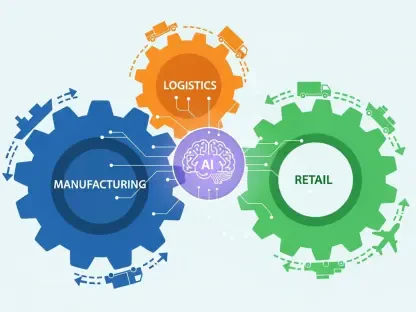The landscape of quantitative finance is undergoing a seismic shift with the rapid integration of artificial intelligence (AI), yet a staggering statistic reveals a critical challenge: fewer than 10% of industry specialists believe recent graduates are prepared for AI-driven roles, raising urgent questions about the readiness of the next generation of quants to navigate a technology-dominated future. This roundup compiles diverse opinions, tips, and perspectives from industry professionals, educators, and surveys to explore the depth of this issue, compare contrasting views on its causes, and identify potential solutions to bridge the divide.
The AI Revolution in Quant Finance: Diverse Perspectives on Preparedness
Industry Concerns: A Stark Skills Shortage Among Graduates
A recurring theme across multiple industry surveys is the profound lack of AI proficiency among new entrants to quantitative finance. Reports indicate a consensus among specialists that the majority of recent graduates lack the machine learning expertise necessary to meet current demands. Many professionals express frustration over the inability of new hires to effectively leverage AI tools, which are becoming indispensable in the field.
This concern is echoed by hiring managers who note that traditional academic training often prioritizes mathematical theory over practical technological skills. The disconnect between what is taught and what is needed in the workplace has sparked debates about whether universities or firms bear greater responsibility for upskilling talent. Some argue that educational institutions must adapt more quickly to industry trends to close this gap.
A contrasting opinion from within the sector suggests that while academia plays a role, employers should also invest in robust onboarding programs to address immediate skill deficiencies. This viewpoint highlights the shared accountability in preparing graduates, emphasizing that collaboration could yield quicker results than waiting for curriculum overhauls.
AI Adoption: Productivity Gains Versus Skill Gaps
The integration of AI tools is widespread, with 83% of quants reportedly using platforms like ChatGPT and Microsoft Copilot for daily tasks such as coding, risk analysis, and market sentiment evaluation. Industry feedback reveals that 44% of professionals experience significant productivity boosts, while 25% save over ten hours weekly due to AI assistance. These figures underscore the transformative potential of such technologies in enhancing efficiency.
However, opinions diverge on the implications of this adoption amidst skill shortages. Some industry voices celebrate AI as a game-changer, arguing that it democratizes complex tasks and allows even less experienced quants to contribute meaningfully. This perspective sees technology as a leveling force, provided basic training is accessible.
On the other hand, a cautious faction warns that reliance on AI without adequate understanding poses risks, including errors in decision-making and over-dependence on unverified outputs. This group stresses that the lack of foundational knowledge among new graduates could undermine the benefits of AI, turning a powerful asset into a liability if not addressed promptly.
Challenges in AI Integration: Explainability and Other Hurdles
A significant barrier to seamless AI adoption, cited by 41% of surveyed quants, is model explainability—the difficulty in understanding how AI arrives at its conclusions. Feedback from global professionals indicates that this lack of transparency erodes trust in automated systems, particularly in high-stakes financial environments where accountability is paramount.
Additional concerns vary by region, with 16% of respondents pointing to regulatory constraints as a hindrance, while 17% highlight the high computational costs associated with AI implementation. Another critical issue, raised by 14% of firms, is the scarcity of formal training programs, which exacerbates the readiness gap among new talent. These diverse challenges paint a complex picture of integration barriers.
Opinions on overcoming these obstacles differ sharply. Some industry commentators advocate for prioritizing explainable AI development to build trust, while others suggest that regulatory frameworks need to evolve alongside technology to reduce friction. A smaller but vocal group believes that cost barriers will diminish over time as AI infrastructure becomes more accessible, shifting the focus to training as the primary concern.
Evolving Skill Sets: From Math to Human-AI Collaboration
The definition of expertise in quant finance is shifting, with traditional mathematical prowess increasingly taking a backseat to skills in human-AI collaboration. Insights from industry leaders suggest that the ability to critically evaluate AI outputs and integrate them into decision-making processes is becoming a core competency for quants at all levels.
Surveys indicate forward momentum, with 23% of firms planning to increase AI budgets between 2025 and 2027, reflecting a commitment to embedding technology into workflows. However, opinions vary on whether current training models can keep pace with these rapid changes. Some professionals argue that lifelong learning must be normalized to ensure adaptability in a dynamic field.
A differing perspective comes from educational stakeholders who propose that foundational AI literacy should be introduced earlier in academic programs to prepare students before they enter the workforce. This view contrasts with industry calls for on-the-job learning, highlighting a tension between long-term preparation and immediate practical needs.
Strategies to Close the Gap: Tips from Across the Field
Bridging the skills divide requires actionable strategies, and insights from various corners of the industry offer a range of solutions. One widely supported recommendation is the integration of AI and machine learning modules into university curricula, ensuring that graduates emerge with relevant technical knowledge. This approach aims to align education with real-world demands from the start.
Firms are also encouraged to take an active role by investing in internal training programs and upskilling initiatives for both new hires and existing staff. Feedback from corporate leaders suggests that fostering a culture of continuous learning can mitigate skill shortages while enhancing employee retention and innovation within teams.
Another practical tip, shared by seasoned quants, is for individuals to pursue certifications and leverage online AI tools to stay competitive. Partnerships between academia and industry are also seen as vital, with collaborative efforts potentially accelerating the development of tailored programs that address specific skill gaps. These diverse strategies collectively point toward a multifaceted approach to readiness.
Final Thoughts on Human-AI Synergy in Quant Finance
Looking back on the discussions, it is evident that the quantitative finance industry stands at a pivotal moment, grappling with the dual forces of AI-driven innovation and a persistent skills shortage among graduates. The roundup of opinions revealed a shared concern over readiness, tempered by optimism about productivity gains and strategic planning within firms.
The varied perspectives highlighted a consensus on the need for collaborative action, with actionable steps like curriculum reform, corporate training, and individual upskilling emerging as key solutions. Moving forward, a focus on building robust industry-academia partnerships could pave the way for sustainable progress, ensuring that human expertise evolves in tandem with technological advancements to drive the field into new realms of possibility.









